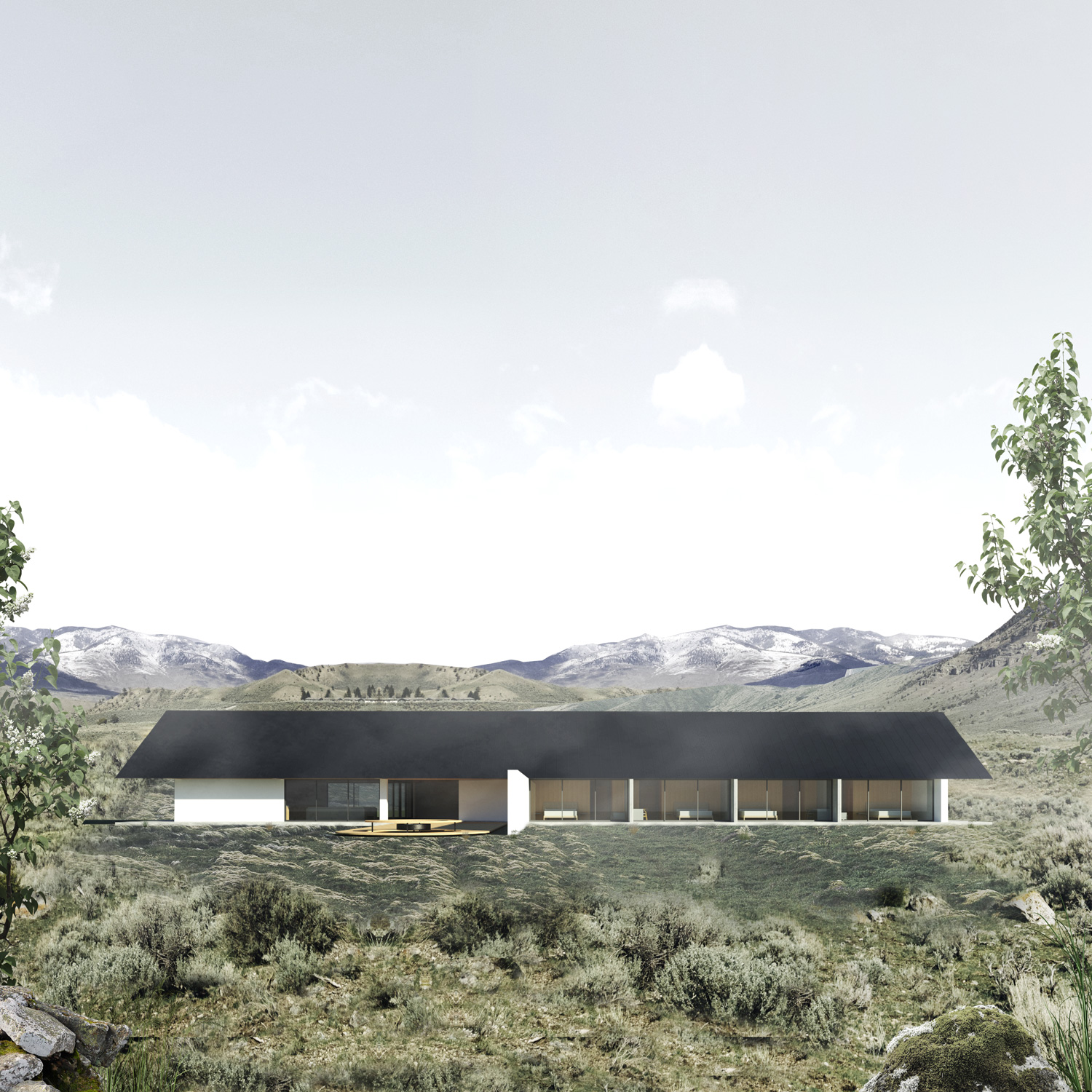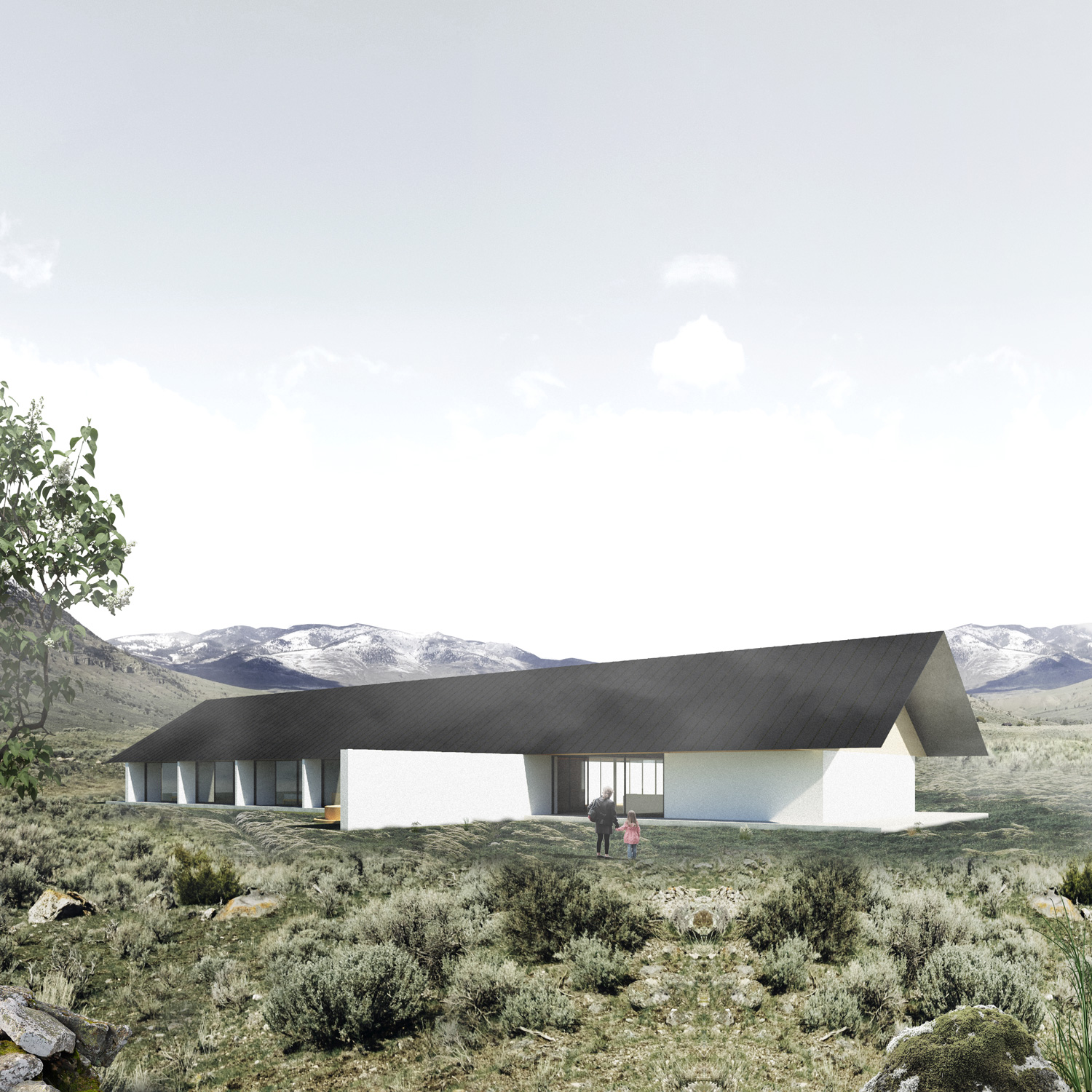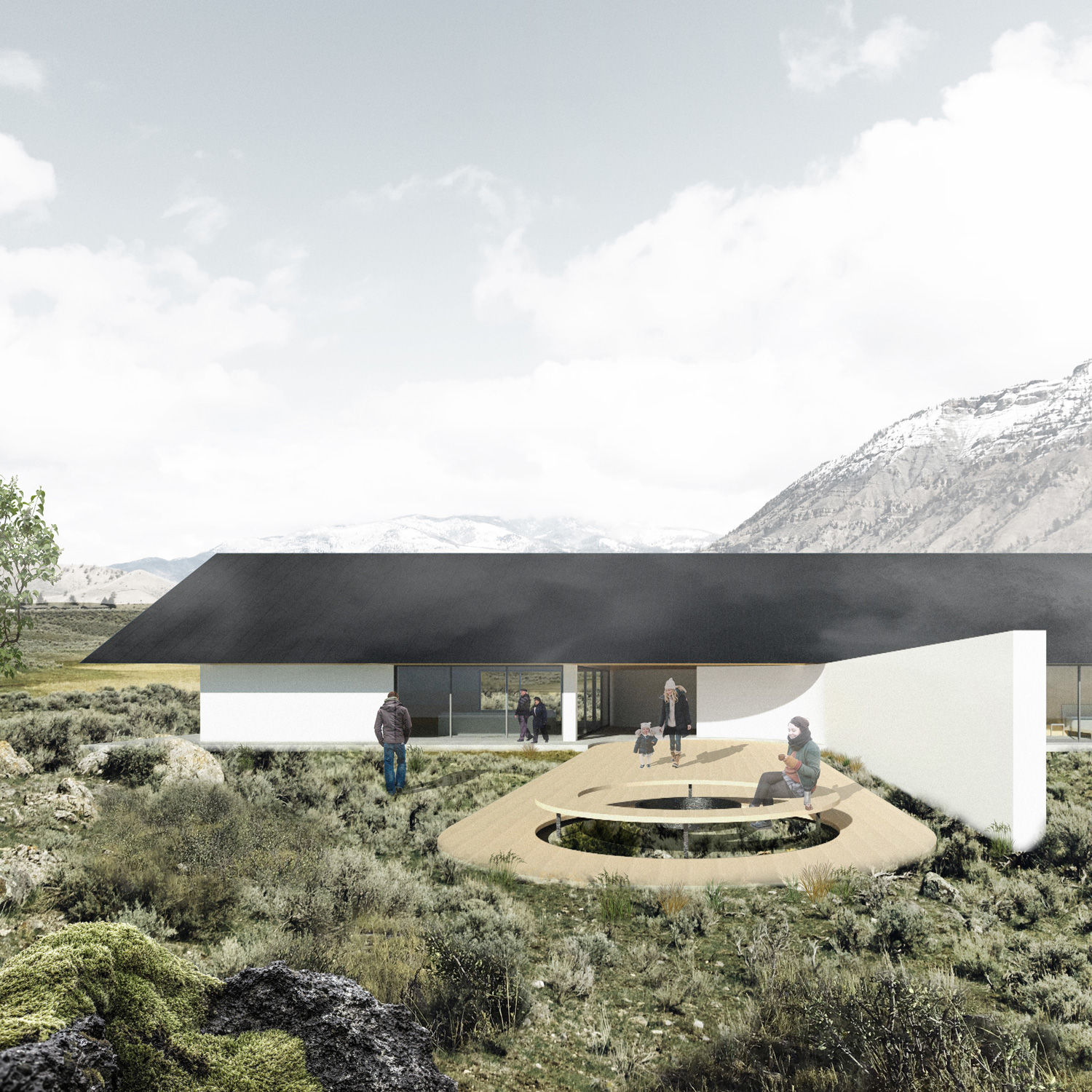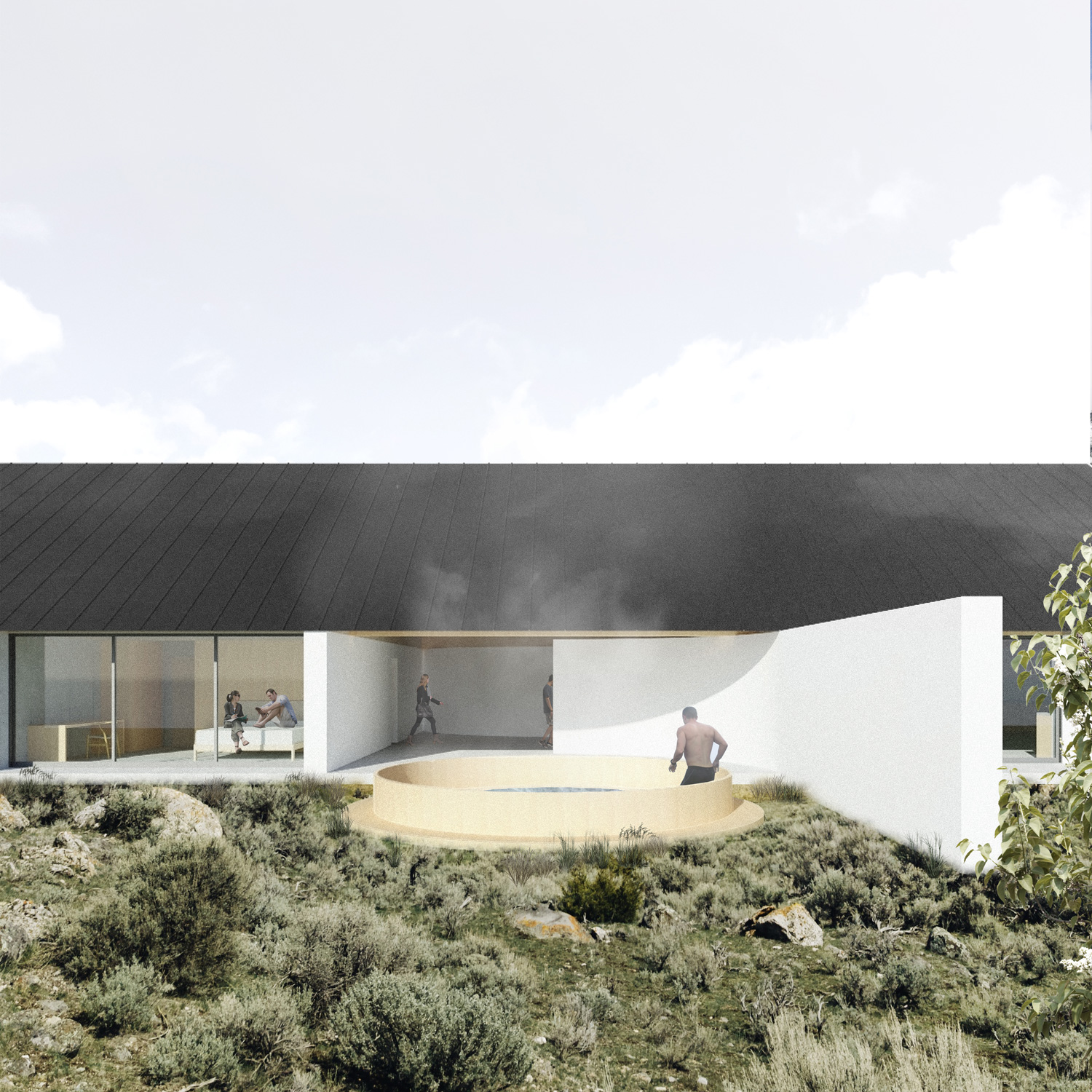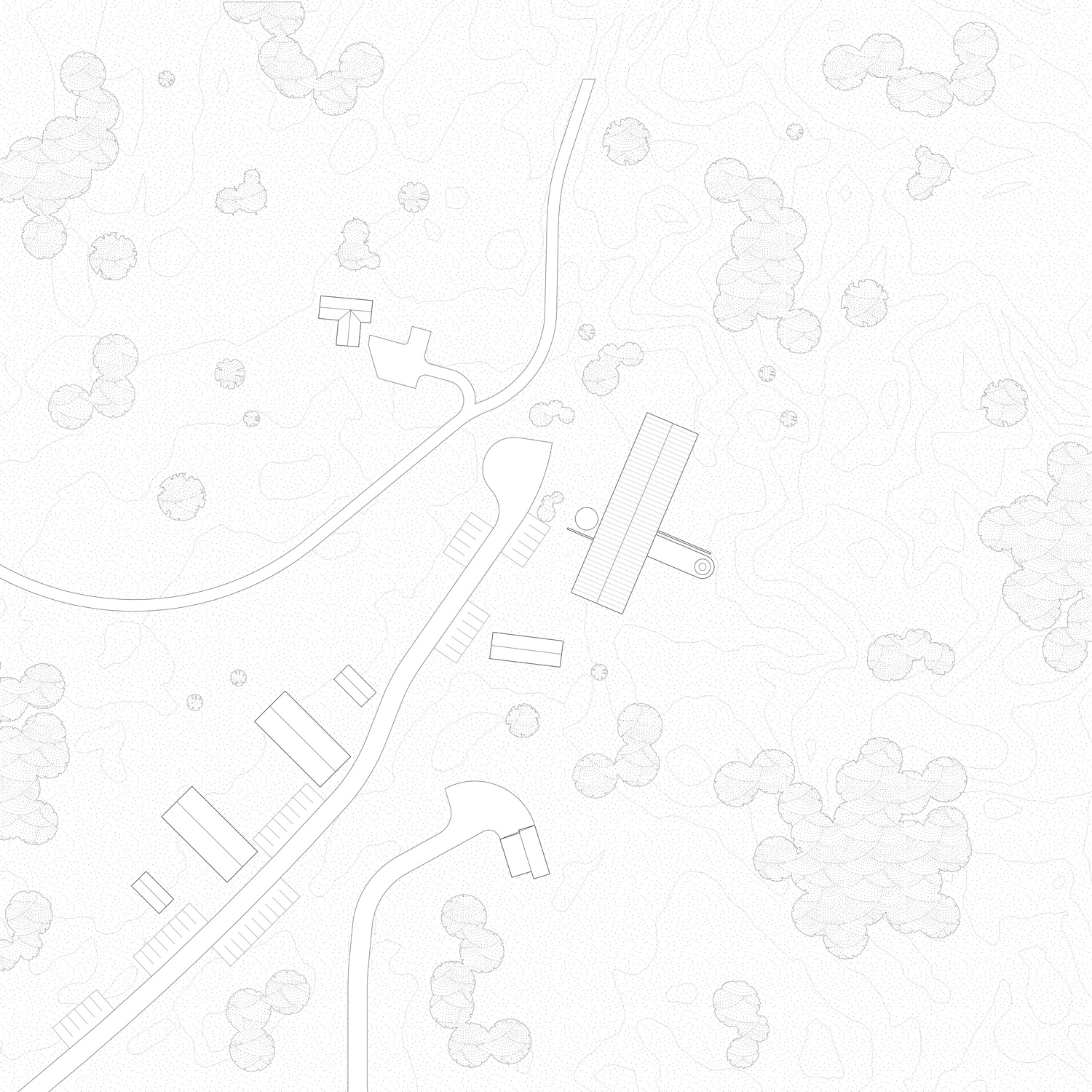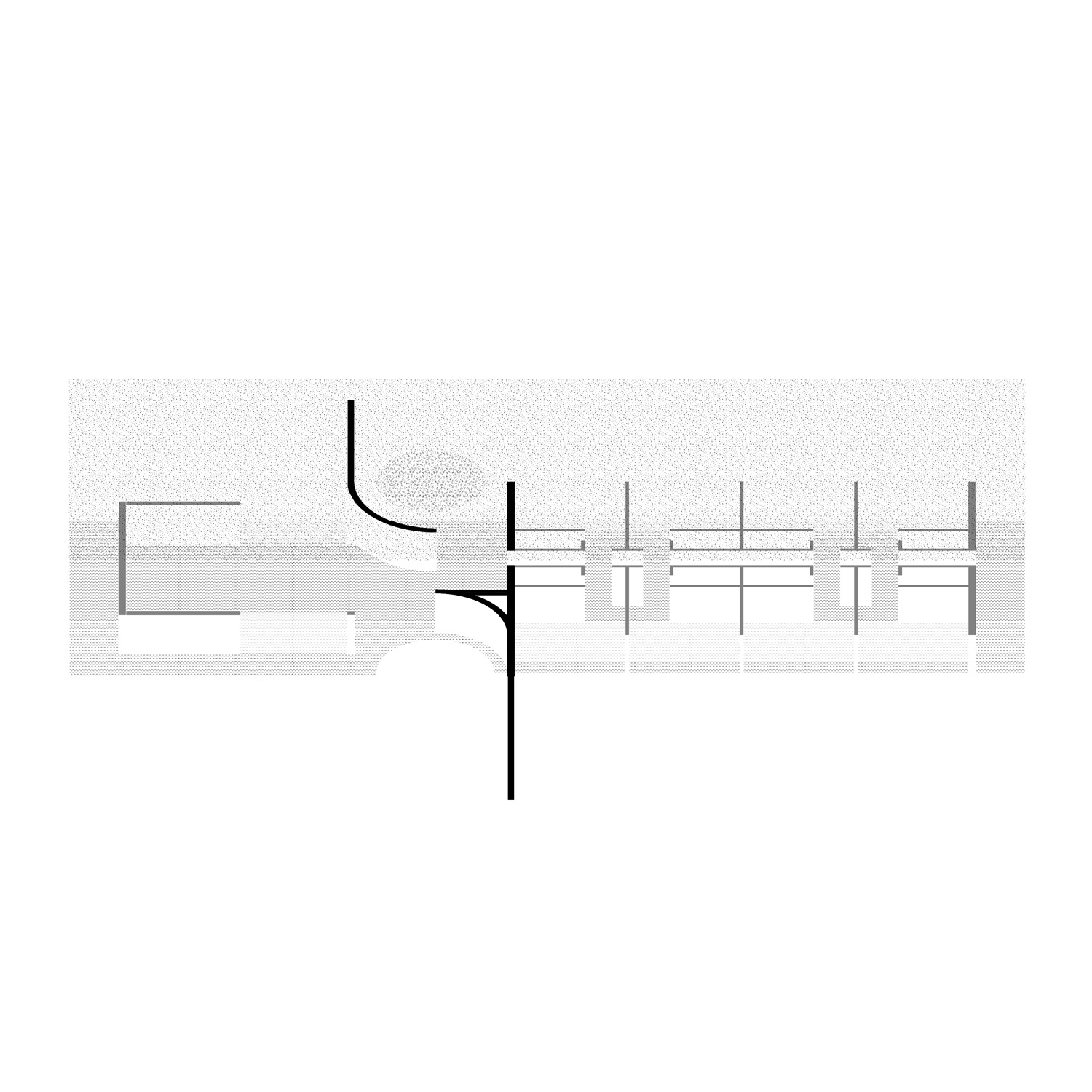☉ Iceland Thermal Springs Guest House is a proposal by Timothee Mercier for Beebreeders in 2019. It is located in Lake Mývatn Iceland in a forest setting. Its scale is small with a surface of 500 sqm. Review the 2 proposals for the same competition.
Iceland’s early architectural history has been defined by the Island’s lack of building materials. Timber, in particular, was rare and used only sparingly. Most early methods of construction were developed to address this shortage – using materials such as earth and stone to replace wood.
While this changed during recent history, (think of the imported Danish timber framed constructions of the 18th century or the Swiss Chalets of the 20th century) – the architectural identity of Iceland is informed at least partially by limited supply and the innovative techniques that resulted from such circumstances.
It is not surprising, then, that one of the first typologies, and arguably one of the most recognizable ones, is the turf house. Two specific features are crucial in understanding turf houses: the materials and the organization in plan.
Although resembling a moss covered hill from the exterior, the turf house is particular in its use of rammed earth for the walls and wood for the support of the roof and the interior finish. Indeed exterior turf walls enclose a wooden frame that holds up the roof’s carpentry.
hese walls are then clad with wooden panels – using as little of the latter as possible for structural components.
In plan these structures are based on the Viking longhouse – a long rectangular volume enclosing all of life’s necessities. In the early days, cattle and people would share the central space, with the kitchen and workshops pushed to the extremities of the building. As time went on rooms became offshoots of a central spine as the living quarters were gradually pulled from the main hall.
These two features are the foundational concepts for this project: a contemporary take on the longhouse – using modern materials that nevertheless reference those used in Iceland’s first generation of buildings.
The project is divided into two volumes unified under one roof. The kitchen and living room are on the Western side of the building, closest to the two existing cabins on the property. The rooms are separated from this area by a semi-enclosed space bounded by two curving walls that extend out into the landscape. Not only do these walls help shield the rooms from view, they also help create nooks for activities: the Jacuzzi on the Northern side and the deck/fire pit on the Southern Side. The eight rooms are lined along the structure’s central corridor – allowing for small individual patios.
Much like the turfhouse, the modern longhouse will use timber sparingly. Concrete walls will help hold up a system of timber beams, trusses and rafters. Because of this, wood is rarely seen from the exterior, creating a sense of warmth and surprise when entering the building. This duality is reflected in the programmatic qualities of the building. The rooms provide privacy while the communal areas promote interactions between guests. It is my hope that the building as a whole also provides a sense of intimacy with nature.
